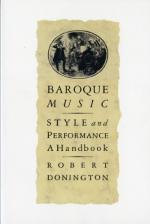|
This section contains 3,180 words (approx. 11 pages at 300 words per page) |

|
Renaissance Inheritance.
No immediate change in styles of dance or in attitudes to the art are perceptible between the late Renaissance and the early Baroque periods. The seventeenth century inherited from the Renaissance a widespread perception of dance as a necessary social grace, a sign of distinction that accomplished men and women needed to master to participate in society. During the fifteenth and sixteenth centuries Europe's first works of dance theory had appeared. While these treatises outlined the necessary steps and skills that a good dancer had to master, they also reached back to Antiquity in search of theories that might support dance's general popularity in courtly society. In Aristotle, Europe's dance theorists had located part of the rationality for dance's aesthetic appeal, arguing that the art displayed the mind's ability to subject the body to its disciplines. The popularity...
|
This section contains 3,180 words (approx. 11 pages at 300 words per page) |

|




